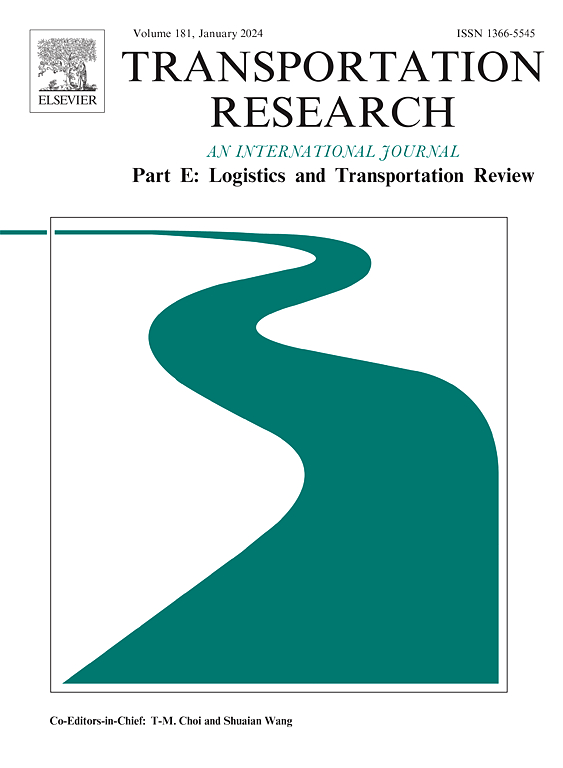品牌博弈:合作竞争供应链中的品牌溢出管理
IF 8.8
1区 工程技术
Q1 ECONOMICS
Transportation Research Part E-Logistics and Transportation Review
Pub Date : 2025-04-29
DOI:10.1016/j.tre.2025.104100
引用次数: 0
摘要
本研究探讨合作竞争供应链中的品牌管理动态,其中品牌较强的原始设备制造商(OEM)将生产外包给竞争力较弱的品牌合同制造商(CM)。制造商可以利用这种外包关系来实施品牌搭便车战略,通过OEM品牌的溢出效应来增强其品牌实力。然而,管理这种品牌溢出提出了一个挑战,促使我们开发一个博弈论模型来分析OEM的外包决策和CM的品牌搭便车战略之间的相互作用。该模型引入了一种新的品牌溢出机制,通过竞争公司之间的直接外包来促进,与现有文献关注的共享CMs不同。这种转变突出了复杂的合作竞争关系,并重塑了外包和品牌免费战略的战略动态和激励机制。尽管无成本的品牌搭便车策略有好处,但我们的研究结果揭示了品牌管理人员应该避免品牌搭便车的三种情况:当溢出效应极低时,策略无效;对于相对较低的溢出,优先考虑外包收入至关重要;当溢出效应不大时,专注于竞争性定价会带来更大的盈利能力。考虑到品牌溢出的风险,我们的研究结果表明,OEM最好保持内部生产以保护其品牌资产,即使在成本上处于劣势,从而挑战外包总是导致成本节约的观念。此外,比较有和没有市场经理承诺不搭便车的均衡策略揭示了一个潜在的陷阱。CM的品牌免费选择,虽然潜在的好处,可以激励OEM追求内部生产,危及CM的外包收入。本文章由计算机程序翻译,如有差异,请以英文原文为准。
Game of brands: Managing brand spillover in a co-opetitive supply chain
This study explores brand management dynamics in a co-opetitive supply chain, where a strong-brand Original Equipment Manufacturer (OEM) outsources production to a competitively weaker brand Contract Manufacturer (CM). The CM can leverage this outsourcing relationship to engage in a brand-freeriding strategy, enhancing its brand power through spillover effects from the OEM’s brand. However, managing this brand spillover presents a challenge, motivating us to develop a game-theoretic model to analyze the interplay between the OEM’s outsourcing decisions and the CM’s brand-freeriding strategy. This model introduces a new brand spillover mechanism facilitated by direct outsourcing between competing firms, diverging from existing literature focused on shared CMs. This shift highlights the complex co-opetition relationship, and reshapes strategic dynamics and incentives for both outsourcing and brand-freeriding strategies. Despite the benefits of the costless brand-freeriding strategy, our results unveil three conditions under which the CM should avoid brand freeriding: when spillover is extremely low, the strategy becomes ineffective; for relatively low spillover, prioritizing outsourcing revenue is crucial; and when spillover is modest, focusing on competitive pricing drives greater profitability. Given the risks of brand spillover, our findings suggest that the OEM might be better off maintaining in-house production to protect its brand equity, even at a cost disadvantage, thus challenging the notion that outsourcing always leads to cost savings. Moreover, comparing equilibrium strategies with and without the CM’s commitment to non-freeriding reveals a potential pitfall. The CM’s brand-freeriding option, while potentially beneficial, can incentivize the OEM to pursue in-house production, jeopardizing the CM’s outsourcing revenue.
求助全文
通过发布文献求助,成功后即可免费获取论文全文。
去求助
来源期刊
CiteScore
16.20
自引率
16.00%
发文量
285
审稿时长
62 days
期刊介绍:
Transportation Research Part E: Logistics and Transportation Review is a reputable journal that publishes high-quality articles covering a wide range of topics in the field of logistics and transportation research. The journal welcomes submissions on various subjects, including transport economics, transport infrastructure and investment appraisal, evaluation of public policies related to transportation, empirical and analytical studies of logistics management practices and performance, logistics and operations models, and logistics and supply chain management.
Part E aims to provide informative and well-researched articles that contribute to the understanding and advancement of the field. The content of the journal is complementary to other prestigious journals in transportation research, such as Transportation Research Part A: Policy and Practice, Part B: Methodological, Part C: Emerging Technologies, Part D: Transport and Environment, and Part F: Traffic Psychology and Behaviour. Together, these journals form a comprehensive and cohesive reference for current research in transportation science.

 求助内容:
求助内容: 应助结果提醒方式:
应助结果提醒方式:


